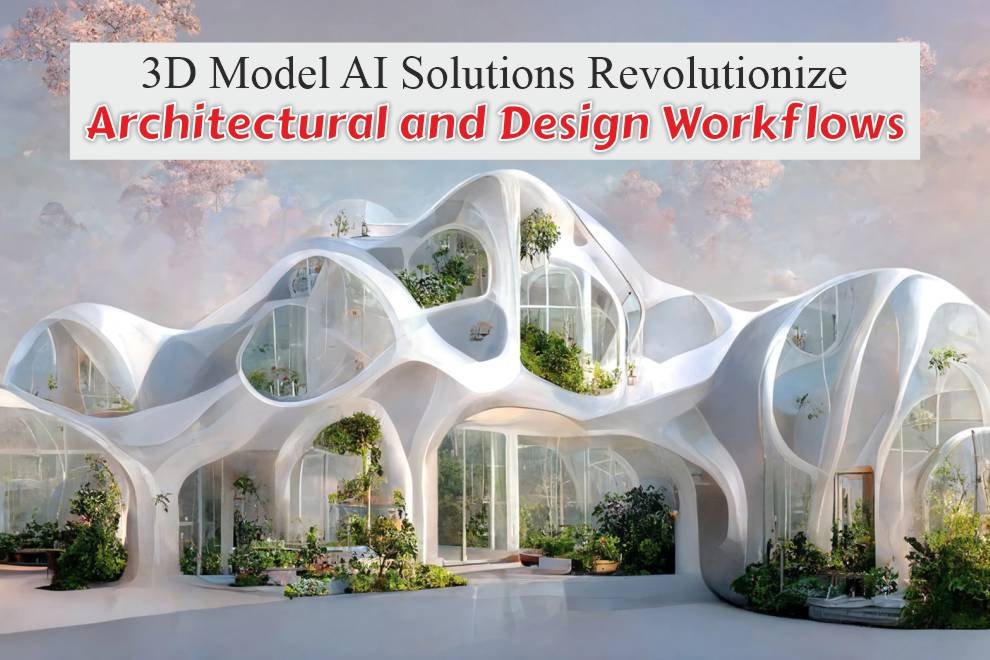Are you tired of spending countless hours on repetitive design tasks? Ever wish there was a way to streamline your workflow without compromising on creativity or precision? Enter 3D model AI solutions – the cutting-edge technology that’s transforming the way architects and designers work. This blog post will reveal how 3D model AI can enhance your workflow, save you time, and elevate your projects. Let’s explore how this groundbreaking innovation can revolutionize your practice.
What is 3D Model AI?
3D model AI refers to artificial intelligence technologies designed to create, optimize, and manipulate three-dimensional models. These tools can perform tasks such as generating realistic textures, automating design adjustments, and predicting structural integrity. Imagine having a digital assistant that understands your creative vision and can execute technical tasks with speed and accuracy. That’s the power of 3D model AI.
The Importance of Efficient Workflows in Architecture and Design
In the fast-paced world of architecture and design, time is of the essence. Efficient workflows are crucial for meeting deadlines, staying within budget, and maintaining a high standard of work. By integrating AI into your practice, you can streamline processes, reduce manual labor, and focus more on the creative aspects of your projects.
How AI Enhances Design Precision
One of the key benefits of 3D model AI is its ability to enhance design precision. AI algorithms can analyze complex data sets and provide insights that might be missed by the human eye. For example, AI can optimize structural designs to ensure they meet safety standards while minimizing material usage. This not only improves the quality of your work but also reduces costs and environmental impact.
Automating Repetitive Tasks
Repetitive tasks such as adjusting lighting, scaling objects, and applying textures can consume a significant amount of time. AI solutions can automate these tasks, allowing you to focus on more creative and strategic aspects of your work. By delegating mundane tasks to AI, you can increase productivity and achieve better results in less time.
Realistic Rendering and Visualization
AI-powered rendering engines can generate highly realistic images and animations, helping you visualize your designs with greater clarity. This can be particularly useful when presenting concepts to clients or stakeholders. High-quality visuals can convey your ideas more effectively, leading to better communication and faster decision-making.
Enhanced Collaboration and Communication
Collaboration is a key component of successful architectural and design projects. AI tools can facilitate collaboration by providing a centralized platform for sharing and discussing designs. Features such as real-time updates, version control, and annotations can improve communication and ensure everyone is on the same page. This can lead to more cohesive and efficient teamwork.
Customizing AI Tools to Fit Your Needs
AI solutions are not one-size-fits-all. Many AI tools can be customized to suit your specific needs and preferences. Whether you need a tool that focuses on structural analysis, material optimization, or aesthetic enhancements, there is likely an AI solution that can meet your requirements. Customization allows you to leverage AI in a way that complements your unique workflow and enhances your creative process.
Overcoming Common AI Integration Challenges
Integrating AI into your workflow may come with challenges such as learning curves and compatibility issues. However, these challenges can be overcome with proper planning and training. Take the time to understand the capabilities and limitations of your chosen AI tools. Invest in training for your team to ensure they are comfortable using the technology. By addressing these challenges head-on, you can maximize the benefits of AI integration.
Future Trends in 3D Model AI
The field of 3D model AI is constantly evolving, with new advancements and applications emerging regularly. Future trends may include more intuitive user interfaces, increased automation, and improved integration with other design tools. Staying informed about these trends can help you stay ahead of the curve and continue to enhance your workflow with the latest AI innovations.
Real-World Applications and Success Stories
While we won’t fabricate case studies, it’s worth noting that many firms have successfully integrated 3D model AI into their workflows. From optimizing building layouts to creating stunning visualizations, AI has proven to be a valuable asset in various architectural and design projects. These real-world applications demonstrate the potential of AI to transform your practice.
Tips for Getting Started with 3D Model AI
Ready to enhance your workflow with 3D model AI? Here are a few tips to get started:
- Research: Explore different AI tools and solutions available in the market. Look for ones that align with your needs and goals.
- Start Small: Begin with a few specific tasks that can be easily automated or optimized with AI. Gradually expand your usage as you become more comfortable with the technology.
- Invest in Training: Ensure your team has the necessary skills to leverage AI effectively. Invest in training programs and resources to help them get up to speed.
- Evaluate and Iterate: Continuously evaluate the impact of AI on your workflow. Gather feedback from your team and make adjustments as needed to improve efficiency and outcomes.
3D model AI solutions have the potential to revolutionize the way architects and designers work. By enhancing precision, automating repetitive tasks, and improving collaboration, AI can help you create better designs more efficiently. Don’t wait to experience the benefits of this innovative technology. Start exploring 3D model AI solutions today and take your practice to the next level..










